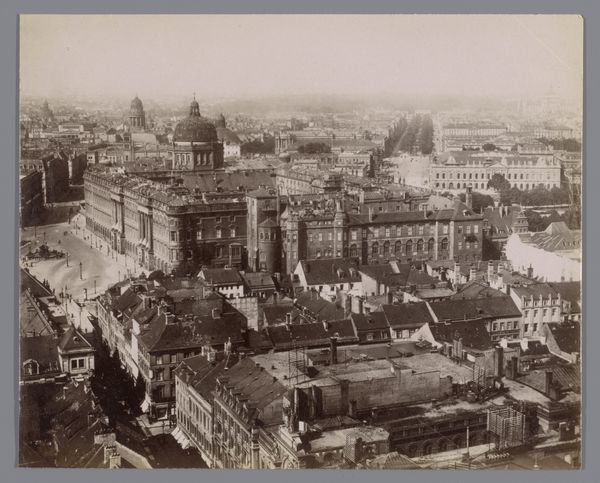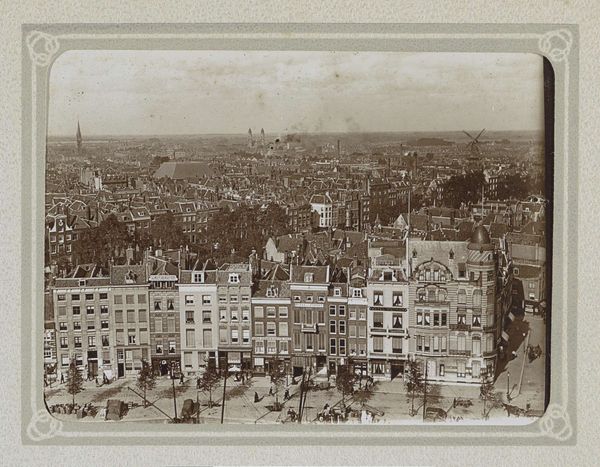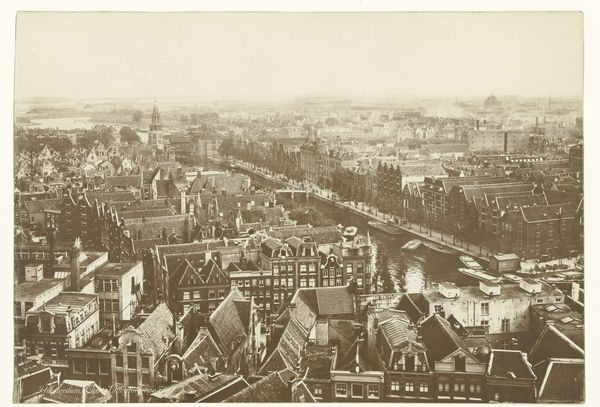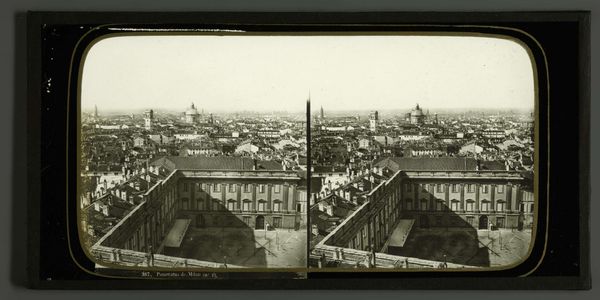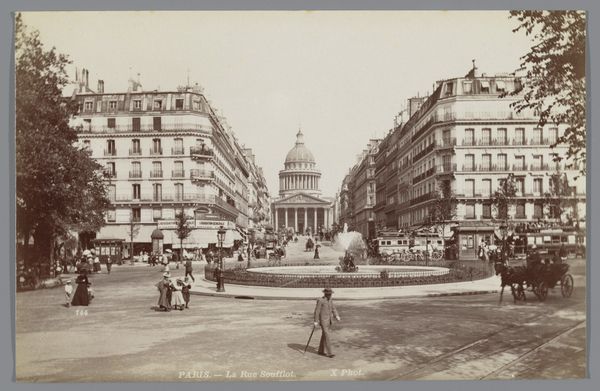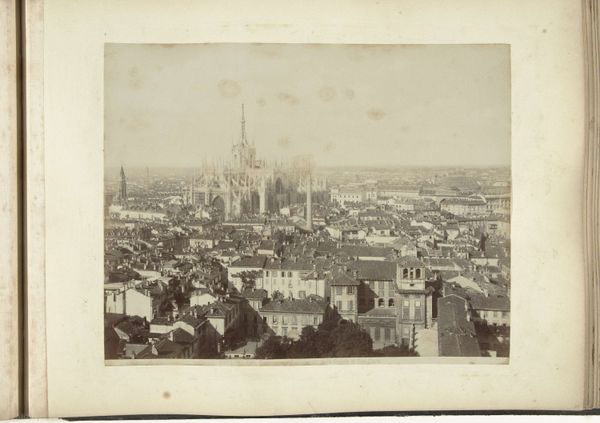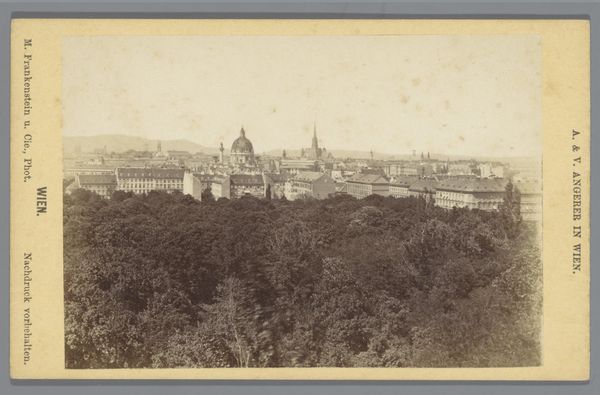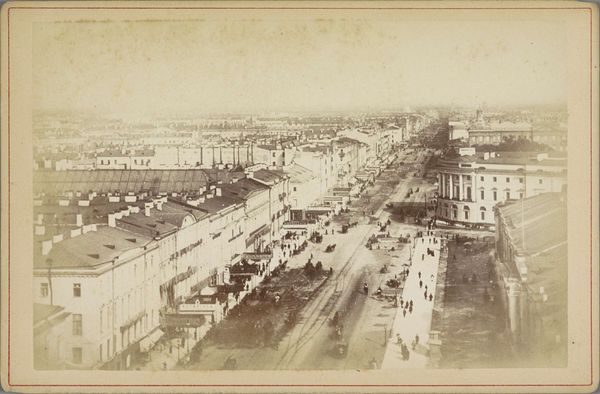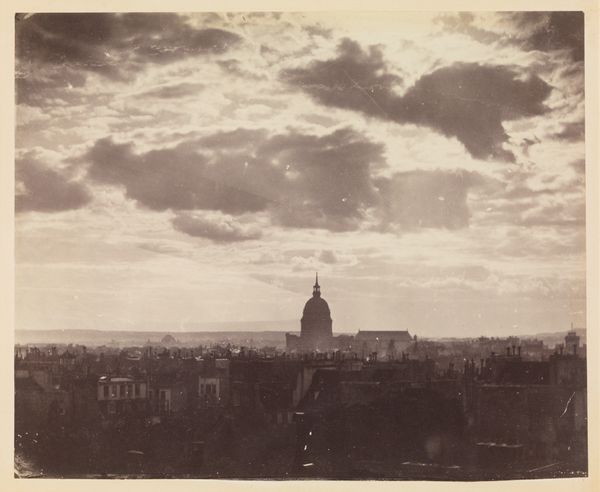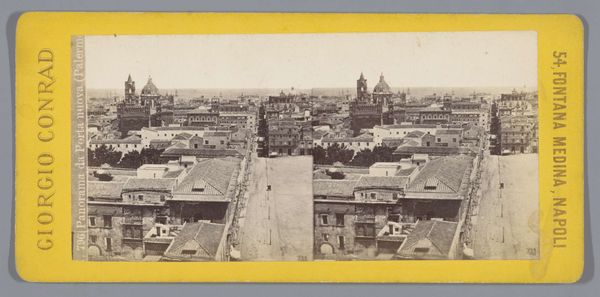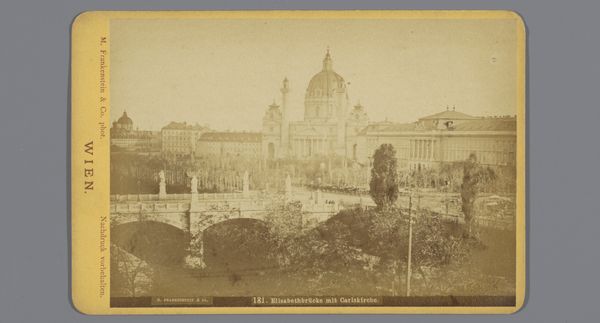
#
architectural sketch
#
skyline
#
historic architecture
#
traditional architecture
#
old-timey
#
19th century
#
historic
#
architectural drawing
#
historical building
#
columned text
Dimensions: overall: 17.6 x 25 cm (6 15/16 x 9 13/16 in.)
Copyright: National Gallery of Art: CC0 1.0
Editor: We’re looking at James Anderson’s "View of Rome," circa 1855. It appears to be a photograph. The buildings are so dense, almost claustrophobic. It makes me wonder about the lives of the people living there. What's your perspective on this work? Curator: It's crucial to acknowledge how a 'view' like this, especially in the 19th century, is never neutral. Anderson, a Scottish photographer working in Italy, wasn't simply capturing a scene. He was framing Rome for a predominantly Western European audience, contributing to a specific narrative of the city as an ancient, monumental, and essentially 'conquered' space. Who had the privilege of these views, and whose stories were obscured by them? How did this representation perpetuate existing power dynamics between the colonizer and the colonized, or the North and South? Editor: So, it's more than just a pretty picture of domes and rooftops? Curator: Exactly. Think about the sheer density you mentioned. That wasn’t just an aesthetic quality. Urban density often correlates with economic disparities, with some inhabitants living in greater luxury than others, suggesting issues around class and resource distribution. How does the image aestheticize or perhaps even sanitize these inequalities? And given that Rome was, and remains, a deeply Catholic city, how does Anderson's framing either reinforce or challenge the authority of the Church? What about gender; who gets to build, who gets their voice heard? Editor: It gives me a lot to consider about whose stories are actually being told—or not being told—in these historical images. Curator: Precisely. Art is never created in a vacuum. It’s a product of its time, reflecting and shaping the social, political, and economic realities that define it. Editor: I never thought a simple view could have so many layers! Thank you.
Comments
No comments
Be the first to comment and join the conversation on the ultimate creative platform.
